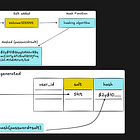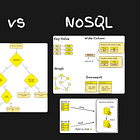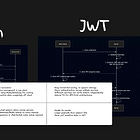Read-Through vs Write-Through Cache
Explained as simply as possible… but not simpler.
You’ve probably heard “just add a cache” thrown around as the solution to every performance problem.
But caching strategies matter. Pick the wrong one and you’ll spend weekends debugging stale data issues or wondering why your writes are suddenly slow.
There are two fundamental patterns you should be aware of: Read-Through and Write-Through caching.
Read-Through Cache
In a Read-Through setup, your application only talks to the cache. It never queries the database directly.
When your application requests data:
The service checks if the cache has the data
If yes (cache hit), it returns immediately
If no (cache miss), the cache fetches from the database, stores a copy, then returns it
Your application code stays simple. It doesn’t handle cache misses - the cache layer manages that automatically.
When it works well:
Read-heavy workloads (product catalogues, user profiles)
When you want simpler application code
Systems where the same data gets requested repeatedly
The tradeoff: First-time reads are slow since every cache miss means a database trip. If your cache restarts, expect a flood of requests hitting your database while the cache warms up.
Write-Through Cache
In a Write-Through setup, every write operation goes to both the cache and database simultaneously.
The write only succeeds when both complete. Your cache and database stay perfectly in sync.
When it works well:
When data consistency is non-negotiable (financial systems, inventory)
Read-heavy systems that also need reliable writes
When stale data causes real business problems
The tradeoff: Writes are slower because every operation has two steps. You might also cache data that never gets read, wasting memory.
How to decide between the two
Ask yourself two questions:
How painful is stale data? If outdated information causes customer complaints or financial errors, Write-Through gives you that consistency guarantee.
What’s your read-to-write ratio? Read-Through excels when reads vastly outnumber writes. Write-Through makes more sense when you write frequently and read that same data soon after.
Real-World Combinations
Here’s what senior engineers know: you rarely use just one strategy.
Many systems combine both. Use Write-Through for critical data that must stay consistent (user account balances). Use Read-Through for less critical, read-heavy data (product recommendations).
Some teams add Write-Behind (writing to cache immediately, database asynchronously) for high-throughput scenarios where eventual consistency is acceptable.
The “right” answer depends on your specific consistency requirements, latency tolerances, and failure modes you can accept.
Caveats
You rarely use just one strategy.
Many systems combine both. Write-Through for critical data that must stay consistent (user account balances). Read-Through for less critical, read-heavy data (product recommendations).
Some teams add Write-Behind (writing to cache immediately, database asynchronously) for high-throughput scenarios where eventual consistency is acceptable.
Neither is universally better. Understanding when to use each is what separates engineers who “add caching” from engineers who design systems that actually scale.
Like posts like this?
You may also like these:
By subscribing, you get a breakdown like this every week.
Free subscribers also get a little bonus:
🎁 The System Design Interview Preparation Cheat Sheet
If you’re into visuals, paid subscribers unlock:
→ My Excalidraw system design template – so you have somewhere to start
→ My Excalidraw component library – used in the diagram of this issue
No pressure though. Your support helps me keep writing, and I appreciate it more than you know ❤️









